 ALBERTA / FOOD & DRINK / RECIPES MARCH 2024
Todo Mexicano: Recipes, Tequila, Beer, and Cocktails | Food on Film
ALBERTA / FOOD & DRINK / RECIPES MARCH 2024
Todo Mexicano: Recipes, Tequila, Beer, and Cocktails | Food on Film







 ALBERTA / FOOD & DRINK / RECIPES MARCH 2024
Todo Mexicano: Recipes, Tequila, Beer, and Cocktails | Food on Film
ALBERTA / FOOD & DRINK / RECIPES MARCH 2024
Todo Mexicano: Recipes, Tequila, Beer, and Cocktails | Food on Film






6 Salutes and Shout Outs
News from Alberta’s culinary scene
10 Chefs’ Tips and Tricks
Four Alberta Mexican chefs share their family recipes
38 Making the Case …for Vino!
40 Etcetera
What’s new?
42 Open That Bottle
With Wendy Irvine, Operations Manager, Unicorn Superpub & Unicorn on 4

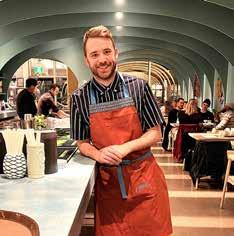


8 Off The Menu
16
Deane House Ginger Beets
by Linda Garson
14 Mexican Culture on Offer: Guac and chips on the side
by Lucy Haines16 Right On Trend
Tequila-forward cocktails by Linda Garson
When you think of Mexico, what comes to mind? A relaxed and carefree lifestyle on vacation? Check. Sun, sand, and sea? Check. Tacos and tequila? Check. And cerveza too for us. Thanks so much to photographer Katarzyna Kowalewska for bringing our vision to life and perfectly capturing those Mexican vacation vibes –now we all want to be there!
20 Holy Mole
Five variations on the classic Mexican sauce by Mallory Frayn
22 A Beautiful Day to be Green
There’s nothing bland, boring, or ordinary about these green recipes by Natalie Findlay

26 Food on Film
10 delicious movies and TV series to spark your appetite by Elizabeth Chorney-Booth
28 Just Roll with It… Chicken enchiladas in easy red sauce by Renée Kohlman
31 Tequila Talk and Tales
Can any other spirit take so much hard physical work to produce? by Linda Garson with Tom Firth
36 Mexican Beer Goes International
Mexican beer has been making a name for itself by David Nuttall
The old question, “what is the difference between ignorance and apathy?”
Answer: “Don’t know, don’t care.”
It always brings a wry smile to my face, as we do know and we very much care! We pride ourselves on being experts in our field – food and beverages – and we never stop learning. That’s why we can confidently write about tastes and the people who create them, ingredients and the people who produce them, processes in fields and factories, and the products that we enjoy as a result.
That’s why I’m surprised (and disappointed) to receive so many requests recently from companies wanting us to write about their products without letting us try them. We trial everything we write about, nothing is copied from press releases; anything we feel you ought to know about, we follow up on and put through its paces. Our recommendations can’t be bought, they

have to be earned, and they have to prove that they deserve to be on the pages of Culinaire. We hope that we’ve earned your trust.
We believe in "walking the talk"; it's very important for us to support local, and that includes being printed in Alberta with as many local writers as possible, and with so much to tell you about these days, we’ve committed to adding even more pages to try and fit all the things we hope you want to know about.
Cheers Linda, Editor-in-Chief
Linda, Editor-in-Chief
Many thanks to Joyce T who wrote,
“I'd love to know the recipe for the honey butter that comes with the bread at Rouge.”
We’re grateful to Chef Paul Rogalski for sharing his recipe!
Rouge’s
900 g unsalted butter
¼ cup the best local honey possible
3 lemons, zested 1½ Tbs kosher salt
Dice butter into small pieces and place into the bowl of a stand mixer with a paddle attachment. Add honey, lemon zest, and salt to the bowl. Once butter is soft, at room temperature, mix until all the ingredients are incorporated starting on low speed, then turning up to high speed. Mix until smooth, and you are happy with the consistency.


Editor-in-Chief/Publisher
Linda Garson
linda@culinairemagazine.ca
Managing Editor
Tom Firth
tom@culinairemagazine.ca
Multimedia Editor
Keane Straub
keane@culinairemagazine.ca
Communications Assistant
Katherine Puhl
katherine@culinairemagazine.ca
Design
Kendra Design Inc
Contributors
Elizabeth Chorney-Booth
Natalie Findlay, Mallory Frayn
Lucy Haines, Dong Kim
Renée Kohlman, David Nuttall
Keane Straub

Contact us at:
Culinaire Magazine
#1203, 804–3rd Avenue SW
Calgary, AB T2P 0G9 403.870.9802
info@culinairemagazine.ca
@culinairemag
@culinairemag
@culinairemag
facebook.com/CulinaireMagazine

Bleu, Natalie has worked in restaurants, hotels, bakeries, and her own business. Currently, Natalie is a freelance writer, recipe developer, photographer and health coach and is loving every minute of it..
Mallory Frayn
Mallory is a clinical psychologist, founder of Impulse

publications, including a column for Psychology Today. Mallory’s work has also been featured in Eater Montreal, Time Out Montreal, and more. Follow her on Twitter @drfrayn.
Renée Kohlman

For subscriptions, competitions and to read Culinaire online: culinairemagazine.ca
Renée is a professional
2017) and her most recent Vegetables: A Love Story (TouchWood Editions 2021). Renée lives in Saskatoon and you can find her every weekend at the Farmers’ Market where she sells her jumbo gourmet cookies.
Culinaire Magazine acknowledges that we live, work and play on the traditional territories of the Blackfoot Confederacy (Siksika, Kainai, Piikani), the Tsuut'ina, the Îyâxe Nakoda Nations, the Métis Nation (Region 3), and all people who make their home in the Treaty 7 region of Southern Alberta. We are committed to support Indigenous chefs and amplify their voices to bring awareness of the food and culture of the First Nations.



Congratulations to Calgary’s Heritage Park who are celebrating their 60th Anniversary this year, and they’re sharing the joy with a reduced membership for only $60! heritagepark.ca
And also to Edmonton’s Lingnan, celebrating their 60th anniversary of popular Chinese cuisine in their current location! thelingnan.com.
And to The Coup in Calgary who are celebrating 20 years of serving acclaimed vegetarian cuisine! thecoupyyc.com
Congrats too to SAIT Culinary Arts student, Erik Hansen, and Chef Instructor Manuel Panfili, who took France by storm in the first, renowned French culinary contest for rising chefs, Trophée Jean Rougié, open to competitors outside France – and won first place!
And more wins! Congrats to Fairmont Palliser’s Rupert Garcia, who won silver, and JP Dublado of Red Deer Resort and Casino, who took bronze at the 2024 Canadian Culinary Championships!
St. Albert has a new bakery – and it’s gluten- and nut-free! Amanda O'Donnell was diagnosed with severe celiac disease a few years ago, and has opened The Celiac Baker in St. Albert along with her all-women team, offering loaves, muffins, scones, cakes, and cookies – with 90 percent of recipes passed down through the generations in her family. 2003 Tudor Glen, facebook.com/the.celiacbaker/
Wishing Thai Sa-On’s Sam Chanhao a happy retirement! Sam introduced Thai food to Calgary in 1989, long before the cuisine was well known, and has now stepped back. Long-time colleague, Chef Patcharin Smith, of Pad Thai in Mount Pleasant, has taken over. Welcome Patcharin, we love your new menu! 351 10 Avenue SW, thai-sa-on.com

Just a few doors down, Calgary’s National on 10th has reopened with a new look! The downstairs bowling alley is still there with a bright new feel, and upstairs on the second floor are arcade games, a new karaoke lounge, and… we hardly recognised the new Bourbon Room! The Nova Room is a VIP space for private bookings, and an escape from the main hall when it turns into a late-night dance floor. There’s a new menu and you’ll be very glad to know it still includes their outrageously good pizzas! 341 10th Avenue SW, ntnl.ca
Le Petit Chef has arrived at Calgary’s Dorian Hotel, at their Bistro Novelle Restaurant, the first and only place in Alberta to offer this very fun and delicious, 3D dinner theatre. You’re in for a treat as the six-centimetre tall chef guides you through a four-course menu with 3D video projection right on your plate – all beautifully prepared and presented by The Dorian culinary team. lepetitchef.com/Calgary
Edmonton’s all you can eat Japanese restaurant, Watari, has opened a new seafood restaurant, Oceania Grill, at 6104 104 Street. The lunch menu is casual with a choice of soups, a ‘tic-tac-toe’ bento-style box, even shepherd’s pie, but at night it goes upscale with elevated fish dishes, beef short rib, rack of lamb, and tomahawk pork chop. Generous portions too! oceaniagrill.com
Buon Giorno’s David Harrison has successfully and seamlessly moved this long-time Calgary Italian ristorante a few blocks west to a totally renovated former jewellery store at 1201 17 Avenue SW. Everything from the previous location has been captured here perfectly, continuing the nostalgia for this Italian

trattoria that everyone knows and loves. Both kitchen and front-of-house staff are still here decades later, and 70 percent of diners are repeat customers - what does that tell you? buongiornos.ca
Makchang Dodook is a Korean BBQ chain with more than 130 locations, and now has one in Edmonton at 1007 Parsons Road SW – the first in Canada. It’s getting rave reviews for beef and pork combos, intestines (Makchang), ribs, bulgogi, scallops… and generous banchan (side dishes)! @makchang_dodook_canada
Chef Troy Fleischhaker has just launched his new business, “Happy Salt” in Calgary after successfully testing it in Kelowna. He plans healthy, restaurantquality meals for busy families, and cooks them in your home to set you up for the week with prepared and ready-to-heat lunches and dinners for the whole family! happysalt.ca
Edmonton Chef Brad Lazarenko has opened Bibo Winebar in the newly renovated Strathcona Hotel, the latest in his Culina family of restaurants. The tapas menu has a Japanese-Spanish influence, with dishes featuring local producers, washed down with premium sakes, local beers, Transcend espresso, and Culina’s cocktails on tap. 10302 82 Avenue, culinafamily.com
Climb the stairs at 118 5 Avenue SW, in Calgary, for a visual and culinary treat at the new Auttarote Thai Cuisine (pronounced ‘Atarott’), the new restaurant from Chef Thirada Phonpackdee and designer Nannaphat Sawangsup - Anna and Mouy, to us. The eclectic space is eyepopping and the familiar, traditional Thai dishes are as beautiful to look as they are to

eat – do try the stunning Auttarote Flower, pork-stuffed dumplings. The warmth and hospitality of Anna and Mouy is also exceptional, and the way they celebrate birthdays - as we witnessed! Lunch and dinner, auttarotethaicuisine.com
With 11 locations in the east, Pakistani restaurant, Karahi Point, has chosen Sherwood Park for its first location in the west. As you’d expect, there’s a lot of Kahari dishes (we counted 17!) on this menu, as well as BBQ, biryanis, and curries. Unit 42, 975 Broadmoor Boulevard, karahipoint.com

+39 Pizza has opened in Calgary’s former Cibo Centre Street location, so you can still get your Neapolitan-style pizza fix in Tuxedo Park. Named after the Italian phone code, +39 Pizza chefs are making every ingredient in house from all DOP certified-origin products, and you know you’re in good hands with certified VPN (Vera Pizza Napoletana) Matthew Sprouse in charge of the wood-fired oven. 2220 Centre Street NE, 39pizza.ca
Hungry and craving Japanese Food?
Edmonton’s Tatsu Sushi has opened its doors at 10163 109 Street, and there’s a



large menu of all you can eat sashimi, sushi, and meats to grill yourself on the Korean tabletop BBQ, as well as poke and rice bowls, ramen and udon. Seven days, lunch and dinner.
Amihan Grill & Bakeshop is expanding and has opened a new Calgary Beltline location in the space that once housed Café Koi, at 1011 1 Street SW, offering authentic and traditional dishes from recipes passed down to them from family and friends, as well as flavourful, moderncasual, contemporary Filipino fare. amihan.ca

Tuesdate Night



Wine Wednesday
Flute Friday
Homestyle Sunday Dinner
e love hearing about dishes you’ve enjoyed in local restaurants, and recently received the email below requesting the recipe for the Ginger Beets at Deane House:
“Good afternoon, Linda,
I hope you’re enjoying this chilly yet sunny day!
My girlfriends and I enjoyed the Deane House last night and one of my friends is in love with their Ginger Beets with the maple chili glaze and toasted sesame.
I would love it if they would share the recipe with you for publication."
Thank you, as always, Suzanne
The Ginger Beet dish has been on the menu at Deane House since 2019, and we really appreciate them generously sharing their recipe.
Thanks so much!
Serves 4
For the Maple Ginger Glaze, combine together the following, heat and reduce to 2½ cups (600 mL) then strain and cool.
2 cups (500 mL) maple syrup
6½ Tbs (100 mL) red wine vinegar
1 cup (250 mL) water
1 star anise
2½ tsp ground ginger
3 whole coriander seeds
1 bay leaf
2 cardamom pods
Pinch of chili flakes
Pinch of allspice
1 tsp tamarind
BY LINDA GARSON
For the Ginger Beets
3 - 4 large beets
To taste salt
Oil for frying
Rice flour for coating beets
Sesame seeds
Green onion, chopped for garnish
1. Steam or boil the beets for 20 minutes or until tender. Cool and peel.
2. Toss in enough maple glaze to coat, and season with salt.
3. Dehydrate whole at 90º C (195º F) for 4-6 hours (or overnight), until the beets have shrivelled and have a little bit of a chew. Cool and tear apart into large pieces.
4. Heat a fryer or a shallow frying pan of oil to 185º C (350º F).
5. Mix the beets with a couple tablespoons of maple ginger glaze, and rice flour to coat.
6. Gently drop the beets into the fryer. Fry the beets until crispy. The bubbles in the fryer oil will start off big and plentiful, and when ready, the bubbles will be small and sparse.
7. Remove the beets from the oil into a mixing bowl, gently shaking off excess oil. While they are still hot, season with salt, and add some toasted sesame seeds, and a couple tablespoons of maple ginger glaze.
8. Garnish with chopped green onions.
If there’s a dish in a restaurant in Alberta that you’d love to make at home, let us know at culinairemagazine.ca, and we’ll do our very best to track down the recipe for you! As with any home baking recipe, ovens and stove tops may vary, and dishes can be adjusted or seasoned to taste.

Customers are free to purchase natural gas services or electricity services from a retailer of their choice. For a list of retailers, visit ucahelps.alberta.ca or call 310-4822 (toll-free in Alberta).
With access to the freshest produce, best beef, poultry, and pork, here in Alberta, Mexican cuisine has been making itself known in the province for the last few years. It’s as diverse as any, with each region in Mexico using what is available while drawing from deeply rooted traditions and culture.
It seems rather fitting that the chef at Calgary’s Tres Marias is named Mary. She adds, “I prefer to be addressed as one of the Marias at Tres Marias!” And, for Chef Mary, like the rest of our chefs this month, her cooking is influenced by a female family member: her mother.
“I strive to bring all the authentic Mexican recipes from back home so that I feel at home here in Canada,” she explains, adding that her son and her husband also inspire her. “My husband prefers the homemade touch and truly enjoys what I prepare for our family. At Tres Marias I feel I’m preparing food for both my family and the customers.”
Pork pastor with a side of guacamole is her favourite dish, but if she’s feeding the whole family, it’s Torta Azteca Beef – a kind of ‘lasagna’ layered with fresh corn tortillas for the win.
When making Mexican food in Alberta, Chef Mary says, “It's essential to be creative and adaptable. Seek out fresh, high-quality produce, and explore local markets for unique ingredients.”
Cortadillo Norteño is a dish from Northern Mexico, and one that Chef Mary’s mother often prepared. It uses minimal ingredients, which makes it easy to enjoy any day of the week. Don’t overcook the meat and adjust the heat to your liking. “If you enjoy spiciness, don't hesitate to include some jalapenos in the salsa for an extra kick.”
Cortadillo Norteño
Serves 4-6
5 tsp (25 mL) oil
500 g sirloin tip or soft beef steak, cut in cubes
This month, our four Alberta chefs share a common thread: they all grew up in kitchens watching the women in their families recreate dishes that were passed down to them. A buen tiempo – you’re just in time - it’s their turn to share those traditions and flavours with us!

1 medium size russet potato, cut in cubes
1 medium size carrot, cut in cubes
1 green bell pepper, cut into squares
½ tsp salt
Salsa
Serves 4-6
5 tomatillos
1 red tomato
2 garlic cloves
2 cups (500 mL) water
½ tsp cumin
½ tsp salt
Mexican rice, beans, and warm tortillas to serve.

1. Heat oil in a large frying pan, add the meat and fry the meat with a little water and ½ tsp salt for 5 minutes.
2. Add potatoes, carrot, and green pepper, and continue to fry for 5 more minutes.
3. Blend the tomatillos, tomato, garlic, water, cumin, and salt.
4. Add salsa to the meat and boil until potatoes and carrots are soft. Adjust salt to taste. Best served with Mexican rice, beans, and warm tortillas.



Chef Victor Hugo of Edmonton’s Spicy Amigos draws inspiration from his roots in Oaxaca, where family members taught him traditional recipes and techniques of the region. “I grew up watching my grandmother in the kitchen, preparing recipes passed down by our ancestors,” he explains. “Growing up in Mexico City, I have a love for, and am inspired by, Mexican street food – which is full of character and flavour.”
The menu at Spicy Amigos is always changing: “We’re constantly sharing new tacos and street food dishes all the time!” Pork chorizo and birria tacos are familiar
favourites, along with the simplicity and flavour of the black bean tacos.
While Alberta is about 5,000 km from Mexico City, there’s still an abundance of produce here that suits Mexican cuisine. “Medicine Hat / Redcliff is the paradise of tomatoes and hot peppers. People are surprised when we tell them our hot sauces use Alberta habaneros and jalapeños.”
Flautas are a classic Mexican dish, found on most dinner tables. “They are easy to make and can be customized to accommodate vegetarians, vegans and gluten sensitivities,” says Chef Hugo.
“The most important things to do when making Mexican food is to have fun and to always cook with love. And remember – Mexican street food is meant to be messy and loaded with toppings, garnishes, and salsas!
2 chicken breasts and/or 8 russet potatoes
1 Tbs salt
3 bay leaves
3 garlic cloves
1 white onion, sliced
16 corn tortillas
350 g feta cheese (plus an additional 200 g for the potato recipe)
2 roma tomatoes
2 avocados
1 head of romaine lettuce (can substitute with iceberg)
1-2/3 cups (400 mL) sour cream
2 cups (500 mL) canola oil
1. Add chicken breasts or peeled potatoes, salt, bay leaves, garlic cloves, and onion to 3 L of water in a deep pot and bring to boil. Let boil for 25 minutes, then remove from heat and let it cool. Once cool, shred the chicken or combine 200 g of feta while mashing the potatoes.
2. Wrap the tortillas in a cloth kitchen towel and heat in the microwave for 2 minutes. Add a portion of shredded chicken to a tortilla and roll into a cylinder shape (or flute shape, where the dish gets its name!). Place the stuffed tortilla flutes into a casserole or baking dish, cover with a lid and place the dish in the refrigerator.
3. Slice the tomatoes and avocados and set aside. Crumble the remaining feta cheese and set aside. Julienne the romaine lettuce and set aside.
4. Add canola oil to a frying pan over medium heat for 3 minutes. Use a spatula to dip the flautas in the oil for two minutes. Flip the flautas to cook for an additional 2 minutes on the other side. Remove from the pan and allow the flautas to cool down (and drain/dry) on a paper towel.
5. Add 4 flautas to a plate and garnish with the prepped lettuce and feta. Squeeze or dollop the sour cream on top, followed by the tomato and avocado slices. Ready to serve!


Also hailing from Oaxaca, Georgina Mejia, owner and chef of Calgary’s Aroma Café and Bar, learned the art of cooking from the women in her family: her mother, aunts, and sisters. “Coffee is my passion, but my life revolves around cooking, and creating unforgettable flavour in my dishes.”
“Our customers tell us they come to Aroma because it has authentic flavours and home-style food that reminds them of their mother’s cooking.” Forget Taco Tuesday: Aroma has Taco Friday, and it has a strong and loyal following. “Every Friday we’re making chicken tinga, pork, and veggie tacos,” says Chef Georgina.
Mexican cuisine is a broad subject, as each region has their own cuisine. Chef’s advice? “I would recommend to try to learn about one specific region and start trying to make some plates.”
To start: Tortilla Soup. “This is very easy to make, and you can find all the ingredients in Alberta.” If you get stuck, Chef says to try searching one of Alberta’s Mexican or Latin grocers for the things you can’t find.
Before you begin, make sure you have everything you need within reach, she adds. Watch your chilies carefully to make sure they don’t burn. And keep those tortilla strips crispy! “If they are too wet, the flavour changes and you might end up creating chilaquiles instead!”

Serves 4
1 guajillo chile
1 pasilla chile
1 ancho chile, cut in small rings
Oil for frying
6 tomatoes, chopped
4 garlic cloves
¼ white onion, rough chop
1 tsp pepper
1 tsp cumin
1 tsp garlic powder
2 tsp chicken stock powder
4 cups (1 L) hot water
To taste salt
2 cups (500 mL) chicken broth, for straining
8 tortillas, cut into strips
1 garlic clove
Sour cream, for garnish
Panela or feta cheese, for garnish
Crispy pork rinds, for garnish
1. Deseed and devein the guajillo, ancho, and pasilla chiles and fry in cooking oil for 30 to 40 seconds. Set aside the
pasilla chile in a small container, this will be a garnish when serving.
2. Add tomatoes, 3 cloves garlic, and onion, to the same pan with chileflavoured oil. Cook everything on low heat for 10-15 minutes.
3. After cooking, blend the tomatoes, garlic, onion, chilis, pepper, cumin, garlic powder, and chicken stock powder for 2 minutes. Add ½ cup (125 mL) of water for texture. Season to taste.
4. In a pot, add 2 tbs (30 mL) oil, strain the blended tomato mix, and add 2 cups (500 mL) chicken broth in the strainer to get all the flavours together. Adjust thickness with more broth if needed.
5. In a frying pan, heat 2 cups (500 mL) oil. Fry the tortilla strips with a garlic clove until light brown - about 3 mins each side. Remove the tortillas from pan and drain excess oil with a napkin. Sprinkle tortilla strips with salt.
6. To serve, add 3 ladles of soup in a soup plate and add the tortilla strips. Decorate the top with sour cream, feta cheese, rings of pasilla chile, pork rinds, and avocado. Enjoy your Tortilla Soup!

“Mexico City is La Patrona’s influence, and my mom is the inspiration,” says Chef Carlos, owner of Edmonton’s La Patrona. “Watching my mother cook instilled in me the passion for food and flavours,” he continues.
The bonus is when the chefs (like Chef Arisbel Mendoza, pictured here) share food with guests, and they in turn share their joy when they taste it. With a menu boasting dishes such as quesadillas doradas, torta cubana, campechano tacos, and huarache asada, we have no doubt there’s a lot of joy going around La Patrona’s dining room.
If you want to try your hand with Mexican cuisine, shop around for the freshest ingredients: “It shows the love you put into your food.”
La Patrona’s recipe for Tacos Campechano is made with ingredients that are easy to find. A blend of suadero (braised brisket) and chorizo, the flavours are reminiscent of taquerias in Mexico City. “These tacos are a family-
style meal,” Chef Carlos continues. “It’s a great way to sit down together and share a meal and not get stuck in the kitchen.”
Serves 5
¼ white onion
2 jalapeño chiles
Oil for frying
400 g suadero (braised beef brisket), shredded
400 g raw chorizo, chopped 25 cm (10”) tortillas
10 g cilantro, chopped, for garnish 2 limes, quartered, for garnish 350 mL bottle salsa tomate and/or salsa verde, to accompany Mexican rice, guacamole, refried beans, to accompany
1. Cut the onion and jalapeño into long strips.

2. Pour a little oil into a hot frying pan and fry onion and jalapeño for 2-3 minutes. Set aside.
3. Fry or heat the brisket and the chorizo separately.
4. Heat your tortillas in a little oil.
5. Mix the chorizo with the suadero and share between the tortillas.
6. Top with strips of jalapeño and onion, and scatter with chopped cilantro.
7. Add some lime and your favourite salsa.
8. Serve with Mexican rice, guacamole, and refried beans if desired.

Moving to Toronto from Mexico some 20 years ago, chemical engineer Vladimir Gonzalez said he just couldn’t find the authentic foods he grew up with in Mexico City in his newly adopted Canadian home. Sure, there were fast food taco joints, and grocery store shelves filled with wraps and salsas, but nothing like the foods his family used to make.
“I wanted foods that reminded me of home dishes with a base of corn, beans, spices, chili peppers, tomatoes, onion, and garlic. I remember how my grandmother would grind the corn with stone; she cooked everything from scratch. I didn’t see that here,” says Gonzalez of a newfound passion that was born right then: to share his Mexican culture and cuisine with whoever wanted to learn about it.
The idea stayed with Gonzalez, even as
demands kept him working at the career he was trained in. But years later, following a trek to Alberta to work in the oil field, a subsequent move to be near family in Calgary, and then a layoff, the dream of creating authentic Mexican products came back to life with Maxi Foods (the name combines those of his children, Maximiliano and Xiadani), now a growing business Gonzalez co-owns with ex-wife Cynthia Ramirez.
“My son thinks the business is named entirely for him,” laughs Gonzelez, who now has two teenagers that do help with the business from time to time, though school is a priority.
Officially started some eight years ago, Maxi Foods operates from a 2,300 square foot facility in Airdrie where Gonzalez routinely rolls up his sleeves (with a couple of employees) to create and package gluten-free tortillas and chips, sauces, and
dips for grocery and market sales.
“I enjoy overcoming obstacles,” laughs Gonzalez of the journey that led him from the office to the prep kitchen.
It may sound like it has all been happening in a linear way, but Gonzalez admits there have been plenty of challenges – from product, equipment, and supply chain issues because of the pandemic, to putting himself 24/7 into the fledgling operation.
Gonzalez credits the SMARTstart entrepreneurial training program in Airdrie with really setting him on his way. Several years back, Gonzalez was paired with mentor (and retired businessman) Sid Van der Meer to create a business plan and gain skills and tools to help him succeed in the crowded, competitive field of retail Mexican fare. Learning about all aspects of owning and operating a small business, Gonzalez is one of over

140 entrepreneurs helped by SMARTstart since it began in 2014.
“We were making everything by hand, sometimes doing prep all night,” he remembers of the early rented kitchen space in Airdrie. “Sid’s help was invaluable, and The SMARTstart workshops – understanding the finances of running a business – was a big part of the learning process.”
So was finding the ‘how?’ for a business looking for shelf space for tortilla chips, guacamole, and salsas. Grocery shelves have long been choc a bloc with packaged tortilla shells, dips, and sauces, Gonzalez points out, so how to set Maxi Foods products apart? Locally made, check. Answering consumer demand for organic and vegan offerings; products made without preservatives, artificial colours or fillers – check and check. Citing quality above all, using imported, authentic Mexican dried chilis, garlic and onion powders – even lime and tomato powders, Gonzalez says it’s ultimately a passion for sharing his heritage through authentic Mexican recipes that makes his company and how he promotes it, unique.
“I saw Vladimir’s work ethic right away; he’s not afraid to work hard,” says Van der Meer, who advised Gonzalez to test his products with consumers via farmers’ markets, to ‘make sure people like it and want it’. And even though starting Maxi Foods just as COVID-19 set in presented yet another challenge to the new entrepreneur, (using Mexican production equipment that needed Mexican expertise to help set up), Gonzalez was undeterred.
The plan was to grow fast, but the pandemic slowed all that down,” Gonzalez says. “We couldn’t do markets or demos even though grocery stores were doing

very well. But we had a loan that helped us survive, and in that time I learned every aspect of the business, even assembling the machinery myself.”
“People want to buy quality Mexican foods from a person with Mexican heritage. Vladimir is like the Juan Valdez (an advertising icon synonymous with Colombian coffee) of Mexican products,” Van der Meer asserts. Case in point. The genial Gonzalez has been making a mark with his unique approach, sometimes showing marketgoers the best way to assemble and eat a taco, or attract grocery shoppers with a food demo surrounded by a mariachi band.
Because Mexican ingredients are much easier to find down the international aisle and dairy case today than in years past, dried chilies, hot sauces, guacamoles, cheeses such as queso fresco and dairy products like crema, have become commonplace. Gonzalez says it’s consumer demand for dairy-free, vegan options in the category that is providing him a niche; products like the company’s popular vegan chipotle cream made with organic cashews is an example.
Today, Gonzalez and company produce nearly 1,000 bags of tortilla chips on a typical eight-hour shift. And while the entrepreneur sells directly to retailers in and around Calgary, Red Deer, and Edmonton, growth may demand that wholesale sales come next.
Gonzalez acknowledges he’d like to be more involved in sales and less in production as the company continues to grow. Already in many Safeway, Sobeys, Co-op Stores, and Blush Organics, Maxi Foods products are now finding their way into Freson Bros. stores, Sunterra and Save on Foods, and the company hopes to soon launch a nacho kit after getting good response testing it at farmers’ markets.
“I’ve learned there are two kinds of people in the business world; the spectators and the people who make it happen. I wish to be the latter.”
Lucy Haines is a long-time freelance writer, specializing in travel, food, arts and entertainment. When she isn't writing, Lucy is a busy mom to four fantastic kids, and enjoys singing and performing in the local community theatre scene.

Over the last few years tequila’s popularity has been steadily growing, making it the spirit of choice for many of our bartenders across the province. It is even rumoured that in the next five years, tequila could overtake vodka and whisky to become the most popular spirit for cocktails.
We’re seeing this ourselves in bars and restaurants, so we asked John Fairholm, Bar Manager at Milpa, a contemporary Mexican restaurant in Calgary’s beltline district, for his thoughts on tequila cocktails and why they are becoming so popular.
“Tequila is not what it was 10-15 years ago; there are over 140 distillers and over 1,400 brands of tequila, it's so dynamic now,” he says. “We have access to so many different distillers and expressions that allow us to develop a vast range of cocktails that can be heavily changed by simply swapping a base blanco tequila for another blanco tequila, or deeper into the
aged classes of tequila.”
Distilleries are changing how they produce their tequila, with different cook times, fermentation and distillation techniques, and resting times. “It's the unique blends and techniques that allow for so many different interpretations of cocktails, classic and modern,” he adds. “A good tequila cocktail will highlight the subtle nuances that are found in the specific tequila used.”
The two most popular tequila cocktails are the Margarita: light and refreshing, with a touch of salt – perfect for a hot day - and the Paloma: a tall tequila and grapefruit soda, on its way to being one of the most ordered cocktails in the world. However, Fairholm says the biggest trend of 2023, was the Ranch Water - 2 oz blanco or silver tequila with ¼ oz lime juice, topped with soda water.
And for those looking for a stiffer drink, he says that the Oaxaca Old Fashioned is the newest tequila classic. “A booze-

forward mix of tequila and mezcal that showcases the nuances of both spirits - stir together 1½ oz blanco or reposado tequila, ½ oz mezcal, 1 bar spoon agave syrup, and 2 dashes of angostura bitters.”
We asked if he could use his skill, knowledge, and experience to create some tasty tequila cocktails that we could easily make at home without having to buy a fridgeful of special ingredients. Many thanks to John Fairholm for generously sharing three of his recipes here – using a blanco tequila, a reposado tequila, and an anejo or extra-anejo tequila.
Happy sipping!

Juanchito Fernández
This is the kitchen's nickname for me. Our sous chef, Kevin Gulien, made us name a cocktail after me when we opened!
2 oz blanco tequila
¾ oz lime juice
¾ oz simple syrup
¾ oz egg whites
4 cucumber wedges
4 cilantro leaves
Add all ingredients to a shaker tin, and lightly muddle (if you don't have a muddler just shake really hard). Dry shake (without ice) for 10 seconds. Add ice to tin and shake. Double strain into a rocks glass, no ice.

Repo Espresso Martini
A reposado tequila espresso martini is an elevated espresso martini. If you don’t have espresso at home, cold brew or a few pinches of instant coffee in a shaker tin can have the same flavour profile.
1¼ oz reposado tequila
¾ oz coffee liqueur
1 oz espresso
¼ oz simple syrup
A few dashes of bitters or ¼ oz of your favourite amaro
Pinch of salt
Add all ingredients to a shaker tin, add ice and shake. Double strain into a coup glass, or your glass of choice.


Anejo Old Fashioned
This drink will work with an anejo tequila but will work even better with an extra anejo! Anejo and extra anejo tequilas also lend themselves well to negronis and manhattans.
2 oz anejo or extra anejo tequila
4 dashes Angostura bitters
1 bar spoon (5 mL) agave syrup or honey (add to desired sweetness) 1 slice orange peel
Combine all ingredients in a glass. Add ice and stir. Zest an orange peel over the glass.
For these cocktails you will need: Shaker tin, Hawthorn strainer, Tea strainer/double strainer, Muddler
March 15-31, 2024

culmination of life experiences that tell the story of who we are. When we share those memories it’s more than sharing a recipe or a meal; we allow a piece of ourselves into the new space we’ve arrived at and invite others to see us for who we are. When Leonardo Barbosa hung two pieces of meat in the kitchen of a Calgary apartment to make the Brazilian carne seca, he opened a door to his past and created a foundation that was to become Lead Foods.
Leonardo and his wife Adriana are the people behind Lead Foods, the first commercial producers of carne seca in North America. Originally from Pernambuco, Brazil, the Barbosas moved to Canada in search of a better quality of life. Leonardo was an agronomist and Adriana a graphic designer. Their early days in Canada weren’t easy, with the couple working to learn and adapt while making a living for themselves in ways they hadn’t anticipated. Lead Foods was still way in their future.
challenges with their newborn son, born with Down Syndrome. “It was a huge blow to process that”, says Adriana. As they prepared for the birth of their son Oliver, Leonardo was faced with choosing between priorities: time with his pregnant wife or working. When he lost his job, Leonardo stayed home to care for their son while Adriana worked. It was not long after that Leonardo hung those two pieces of meat to make his family’s recipe for carne seca and bring a taste of Brazil to their new life.
Carne Seca originated out of necessity to preserve meat. It was a source of protein for sugar cane plantation workers, the working backbone of the country’s underrepresented industry. The overall process of preserving red meat is not unique and its origin is difficult to pinpoint as each country has its own method. Brazil had beef carne seca – a type of jerked, spiced beef. On leaving their home country, Leonardo missed the flavours and the memories they represented.


taste of Brazil to their new Calgary home. But it would take more than a year before production of Carne Seca began. Recipe testing, analysis, and documentation were a few of the hurdles Leonardo needed to overcome for approval with the Canadian Food Inspection Agency (CFIA). “At the time, there was nothing similar to Carne Seca”, he says.
Lead Foods officially sold their first box of Carne Seca on July 11, 2018. “One problem getting it to market was developing the fla-




is another driving force behind why they do what they’ve been doing. Family is a key element to their company’s direction.
Their roster consists of their foundational Carne Seca, also known as Carque or Jabá, made (at Lead Foods) from Canadian beef in the Brazilian tradition of a dry salt process. Their paio sausage is a thick smoked sausage made from pork loin seasoned with garlic and spices, and the calabrese sausage – also pork loin – is cured and double smoked with red pepper flavours in a ‘mild’ (with hints of fennel and bacon) and hot version. became a strong brand within the Brazilian community in Canada and the United States, it was now time to reach the Canadian community,” says Leonardo. “Made in Alberta helps consumers identify products made literally next door to them.”
Lead Foods now produces and sells several tastes of Brazil including a feijoada kit, paio sausage, and calabrese sausage (mild or hot). The company is based in Calgary and employs about 12 employees. It’s an ideal fit for the Made in Alberta program, with alignment in locally made products of quality and a focus on supporting community-minded
“I came here without English,” says Leonardo. “Today I’m registered with Alberta’s agronomist institute and have conversations with people in the Canadian and American governments.” Leonardo is a little overwhelmed by the support of their community. “For an immigrant who came here without knowing what he was going to do with his life, it’s a lot.” He's grateful. And their son Oliver, the light of their lives,
“We originally focused on serving the Brazilian community”, says Leonardo. “But since we got listed with Sobeys in their local program, we are also focusing on North Americans.” The feedback from in-store sampling of things like the Feijoada Kit has been in Leonardo’s words: phenomenal. “Feijoada is the national dish of Brazil, and we are the only company in North America to make it authentically.”
Like others in the Made in Alberta program, Leonardo and Adriana’s story is about reflecting on where they come from and working with their community. “When Albertans buy local, they are not only bringing prosperity to their communities but reducing costs and environmental impacts,” says Leonardo. The couple are still overwhelmed by the interest in what they’re doing, and it all came full-circle when their hometown news company – Journal do Commercio –published an article on the family in 2021. “Our story is about connection to our family memories through food.”
Lead Foods are distributed across Canada, in the United States, and sold through the company’s website. For those seeking an authentic taste of Brazil, Lead Foods can be found in more than 120 locations in North America, and easily available in Calgary and Edmonton. See leadfoods.com.



Mole, pronounced “mole-ay”, and not like the pesky rodents that enjoy digging up your yard, is a complex sauce and Mexican staple that is well worth incorporating into your recipe repertoire. The name itself comes from the Nahuatl word “mōlli” and has a long history dating back to Mesoamerica.
While the exact origin is unclear (the first written recipe only dates back to 1810), Oaxaca and Puebla are the two states that claim to have come up with what is now one of Mexico’s national dishes. One story goes that the elaborate sauce was the brainchild of the nuns at a convent in Puebla, who when told that the archbishop was coming to visit, attempted to scrounge up a feast with the meager pantry they had on hand. When asked what they had concocted, they replied that they had made a mole, which once was
another word for “mix”.
Whatever the origins, it is undebatable that mole in all its forms is delicious. And just like the diversity in its origin story, the sauce itself has countless variations that differ based on where they are made, what chiles are used, and what other ingredients round out the mix. Below are five of the most common mole families to be on the lookout for, complete with their ideal pairings.
**A quick note for the food afficionados out there: yes, it is widely held that there are actually a total of seven distinct types of mole. However, the two that were excluded from the list below, mole chichilo and mole manchamantel, are the most rare and so were “triaged” to focus on the more common types in more detail. To avoid further offense, there is also some debate as to which
types of mole are subcategories of other types, versus entirely different types, so depending on which list you consult, you may see a different combination of seven sauces listed. As with many foods, the reality may be that there are thousands, if not millions, of different takes on mole depending on whose house you show up at for dinner.
When we hear “mole” in North America, mole negro is usually the variation being referred to. Literally translated as “black mole”, this version is laden with chiles and chocolate, as well as a laundry list of other ingredients that includes, but is not limited to, peanuts, sesame seeds, and raisins. Many recipes feature upwards of 30 different ingredients! The only downside here is that the complexity of the ingredient list also maps onto the complexity and intensity of the preparation process itself. Not only do you have to procure all your chiles, but you also have to individually toast and rehydrate them before blending the works together. If you’ve got the day off and have 5+ hours to spare, it can be a fun kitchen project, just make sure you quadruple the recipe so you can keep portions in the freezer to thaw and reheat whenever a hankering for mole hits.
Mole negro is fabulous served with poultry: turkey, chicken, or even gamier options like quail or guinea hen, given that the chocolate and chiles can stand up to their richer flavour.
Also called mole rojo or “red mole” because of, you guessed it, its rusty, redbrown colour, mole colorado has a similar arsenal of ingredients to mole negro with one key procedural difference; the dried chiles are subject to less charring, causing the colour to stay lighter. A further variation, mole coloradito or “little red mole” sometimes gets a dose



of green herbs added in at the end of the cooking process, yielding a paler, red sauce. Similarly labour intensive to mole negro, the colorado/coloradito subtypes require some preparation and planning to put together, but if you’re going to the trouble anyways, why not try making both to taste test side-by-side?
Mole colorado is again great with virtually any poultry. Mole coloradito also makes a stellar enchilada sauce given that it is a bit less potent (read, less spicy) than some of the other moles.
While the first two moles described above hail from the Mexican state of Oaxaca, mole poblano comes from the more Northern state of Puebla, thus deriving its name from its birthplace. The product itself is quite similar to mole negro and mole colorado, with a familiar mixture of chiles, spices, nuts, and chocolate, however setting itself apart with a combination of chiles such as ancho, mulatto, and guajillo. Added into the mix is a greater proportion of fruit, including raisins, tomatoes, and sometimes plantains, making it the sweetest of the mole options. Not to be fooled though, it’s also spicy, so the
different flavour profiles work to balance each other out!
Mole poblano is pals with poultry. Try it out with duck, which pairs well with the sweetness (think duck à l’orange but chile-centric).
Mole verde breaks the mould set by the above styles of mole, nixing any inclusion of dried chiles and chocolate, making for a brighter, fresher sauce that is also much easier to whip up without taking the whole day to do so. The base is made up of fresh chiles, largely jalapenos, as well as other green vegetables such as tomatillos, fresh poblano peppers, and herbs like cilantro. At a glance, it may sound quite similar to salsa verde, but where it differs is in the inclusion of ground pumpkin seeds, which help to thicken the sauce. It is also a cooked sauce, whereas salsa verde is typically made by blending roasted tomatillos with a mix of other raw ingredients.
Mole verde is lighter, which lends it well to vegetarian options, like seared tofu. You could also get away with serving it with fish: lightly grilled salmon or halibut, or even sautéed shrimp.
Another distinctive deviation from the red-brown colour palette of many a mole is mole amarillo, which is made predominantly from yellow amarillo chiles (not to be confused with Amarillo, Texas, or the associated George Strait song). The base chiles, chilhuacle and chilcosle, are relatively challenging to get one’s hands on, so may warrant a trip to Oaxaca to procure, although they can also be found online depending on how much you’re willing to spend. This is also a chocolate-free variation, instead showcasing the chiles, warm spices, tomatoes, tomatillos, onion, and garlic. Notably, while other moles are served on more formal occasions, mole amarillo is a staple for street vendors serving up portable fare like tacos and empanadas.
Mole amarillo, as hinted above, works well with more casual eats, and is used to enrobe shredded chicken that is then stuffed into doughy empanadas. You could also use it as a binder for tamale filling.
Mallory is a Calgary clinical psychologist and food writer now living and eating in Montreal. Her goal is to help people develop healthier relationships with food. Follow her on Twitter @drfrayn.

Avery famous frog once said, “it’s not easy being green”. There’s nothing bland, boring, or ordinary about these green recipes. From breakfast through to dessert, a full day of green eating that is both healthy and delicious will have you questioning what Kermit was talking about. Being green is all kinds of yum!
STORY AND PHOTOGRAPHS BY NATALIE FINDLAY Matcha Pudding Kermit Would LoveServes 2-3
3 Tbs matcha powder
½ cup sugar
1/3 cup cornstarch
2 cups (500 mL) 10% milk
1/3 cup (80 mL) whipping cream
1 Tbs icing sugar
1. Sift matcha powder. In a small saucepan combine sugar, matcha, and cornstarch.
2. Add the cold milk and whisk until incorporated.
3. Place over medium heat and stir constantly until mixture reaches a boil.
Let bubble for 1 minute while continuing to stir. Remove from heat. (If you notice that there are still small lumps from the matcha press through a fine mesh strainer).
4. Pour pudding into serving dishes. To avoid a skin forming on the pudding gently press plastic wrap all around the complete surface of the pudding.
5. Place in the fridge and let cool completely.
6. In the meantime, whip the cream in a medium bowl until soft peaks form. Sift the icing sugar into the cream and continue to whip to firm peaks. Dollop on each pudding and sprinkle with a touch of matcha powder to garnish.

Serves 4-6
2 Tbs (30 mL) olive oil
1 small poblano pepper
10 stalks asparagus, trimmed and cut into 3 cm pieces
1 cup frozen peas
1 cup arugula leaves, roughly chopped
2 Tbs parsley, roughly chopped
10 large eggs
½ cup (125 mL) milk (cow or alternative)
1 Tbs (15 mL) pesto
To taste salt and pepper
Optional: ½ cup feta or other cheese
1. Preheat the oven to 375º F. Heat the oil in a 25 cm oven-safe skillet over medium heat. Add the poblano pepper and asparagus and sauté for 1-2 minutes.
2. Then add the frozen peas and arugula and sauté another 1-2 minutes, or until the arugula is wilted. Remove 1/3 of the vegetables to a plate and make sure the remaining half of vegetables are evenly spread out.
3. In a large bowl, whisk together the eggs, milk, pesto, and salt and pepper. Pour the eggs over the half of the vegetables in the pan. Cook on the stove for 2-3 minutes.
4. Add the remaining vegetables and parsley on top (dollop with cheese if desired). Transfer to the oven and cook for 15-20 minutes, or until the eggs are set.


Follow us to embrace the whole Italian culture and way of living.
Note:
Frittata can keep in the fridge for 3-4 days. You can also freeze for up to 3 months.


Makes 1
2 Tbs (30 mL) mayonnaise
2 Tbs (30 mL) pesto
½ zucchini
½ green pepper
1 small poblano pepper
1 Tbs (15 mL) olive oil
2 slices bread
2 lettuce leaves
2 Tbs (30 g) goat cheese, optional Handful alfalfa sprouts
1. Combine mayonnaise and pesto in a small bowl.
2. Heat a frying pan, grill pan, or barbecue.
3. Slice the zucchini into strips. Remove the seeds of the green pepper and poblano pepper and slice each half in half.
4. Coat veggies with olive oil on both sides. Grill or sauté until softened.
5. Toast the bread. Coat each slice with the pesto/mayo combo.
6. Lay the lettuce leaves down on the bottom bread slice. Top with zucchini strips, green pepper, poblano pepper (optional goat cheese goes here), then the sprouts, and crown with the second slice of bread.
Serves 2-3
2 tsp (10 mL) olive oil
1 leek, white and light green parts only
1 stalk celery
½ tsp dried thyme
2 bay leaves
¼ tsp sea salt
¼ tsp cumin

20 grates fresh nutmeg
3 cloves garlic
¼ cup (60 mL) white wine
1½ cup broccoli
1 cup spinach
3 cups (750 mL) vegetable stock
1½ cup broccoli florets
Chives and creme fraiche, optional for garnish
1. In a medium pot over medium heat, add olive oil.
2. Roughly chop leeks and celery, add to the pot and cook 2 minutes.
3. Add the thyme, bay leaves, salt, cumin, and nutmeg. Continue to cook another 3 minutes. Add the garlic and cook another minute.
4. Pour in the white wine and let reduce 2 minutes.
5. Add the roughly chopped broccoli and spinach as well as the stock. Bring to a boil and reduce to a simmer and let cook approximately 20 minutes. Broccoli should be soft.
6. Puree with a hand or stand blender until smooth. Adjust seasoning as desired.
7. Fill a medium pot ¾ full with water and bring to a boil. Add the broccoli florets and cook 1 minute. Drain and add to the soup.
8. Serve with garnishes as desired.

Serves 2-3
2-3 servings pasta of choice
1½ Tbs (22 mL) olive oil
15 stalks asparagus, trimmed and sliced on the diagonal
6 cloves garlic, thinly sliced
1 lemon, zested and juiced
¾ cup peas (frozen is great) To taste salt
10 leaves fresh mint
10 leaves fresh basil
5 stalks fresh parsley
½ cup Parmesan cheese, finely grated
1. Bring a medium pot of water to a boil for the pasta. Cook as per direction on package.
2. Place a medium sauté pan over medium heat. Add oil. Add the asparagus and cook 2 minutes.
3. Add garlic and cook 2 minutes. Add lemon juice and turn off heat.
4. Remove pasta from water when finished cooking and add to the pan. Don’t toss pasta water. Add the peas and cook 1 minute.
5. Strain peas and add to pan. Season to taste.
6. Top with mint, basil, parsley, and lemon zest. Serve with copious amounts of Parmesan cheese. Enjoy being green!
Natalie is a freelance writer, photographer, and pastry chef. A graduate of Cordon Bleu’s pastry program, she manages her own business too to create custom-made cakes.












Restaurants can be dramatic places. Get together a group of intensely passionate people, the glamour of a beautiful dining room, gorgeous dishes that act as edible works of art, and the high stakes narrative of keeping a business afloat or earning a Michelin star and you’ve got a recipe (pun intended) for cinematic gold. But even with all that, truly great TV shows and movies about food are relatively few and far between, which is even more surprising given how much time most of
us have spent either eating at or working in restaurants.
There are plenty of movies and shows that take place in restaurants — think of all the tales of comedic romance set in diners and pizza joints — but there’s a difference between movies that use restaurants or home cooking as a convenient backdrop and those that truly capture either the experience of cooking and eating or the culture, stresses, and joys of running a restaurant. Those latter categories are hard to pull off well,
especially without the benefit of smell and taste.
The following movies and shows about food and restaurants all create actual pangs of hunger or make you feel like you’re sitting in a restaurant rather than on your living room couch.
The tale of a Michelin-level chef who returns to his family’s Chicago sandwich shop after the death of his older brother, The Bear has set the bar in terms of
restaurant industry drama. The show’s second (and most recent) season, which sees protagonist Carmen “Carmy” Berzatto turning his humble sandwich stop into a full-scale contemporary restaurant, has caused many a real-life chef to fall into a state of panic, while also featuring some of the most compelling and heartfelt culinary moments ever depicted on television.
The Menu (2022)
The Menu doesn’t so much celebrate Michelin-starred restaurants as it lampoons them, and viciously so. Starring Ralph Fiennes as a diabolical chef who creates an unforgettable menu for an elite group of diners, the film starts off as being about a Noma-like fine dining restaurant, but quickly reveals itself to be a very (very) dark comedy. Not for the faint of heart, The Menu should nudge us all towards taking our fine dining reservations just a little less seriously.
Big Night (1996)
A film that tugs at both the stomach and the heartstrings, Big Night tells the story of an ill-fated restaurant run by Italian-American brothers Primo and Secondi, played to perfection by Stanley Tucci and Tony Shalhoub. It’s a sweet story of immigration and identity, but the movie’s real stars are plate after plate of incredible Italian food. The show-stopper timpano, a dramatic dome of pasta, cheese, meatballs, and eggs, looks so good you’ll find yourself googling recipes with the pipe dream of attempting to make one yourself.
Tampopo (1985)
If this Japanese “ramen Western” doesn’t make you hungry for a steaming hot bowl of noodle soup, nothing will. Tampopo follows the story of namesake protagonist, a fledgeling ramen restaurateur who aims to make the perfect bowl with the help of two mysterious truckers named Goro and Gun (a combination of names that should sound familiar to patrons of the Concorde Group’s downtown Calgary ramen restaurant). Along the way, irreverent and occasionally naughty food-related vignettes are cut into the main story for a wacky meditation on the pleasures of food.
The world of food-related documentary TV is wide: you’ve got your various Anthony Bourdain series (which grew to be more about travel and culture than food), you’ve got various David Chang projects, Stanley Tucci’s journey through Italy, and then, of course, a whole world of instructional and competition shows. The gold standard, though, has got to be documentarian David Gelb’s Chef’s Table, a stunningly serious Netflix series that follows some of the restaurant industry’s most illustrious chefs, including Michelin rock stars like Massimo Bottura and Grant Achatz. The chefs’ stories are compelling, but the photography of some of the world’s most outstanding dishes really seals the deal for this series. Gelb’s previous project, the full-length documentary Jiro Dreams of Sushi (2011) is also a foodie must-see.
Director Ang Lee’s 1994 film about a widowed chef and his three adult daughters all living together in Taipei starts with a lengthy cooking montage that could have happily gone on for the entirety of the film’s two-hour run; watching Lung Sihung’s character go through the motions of preparing an opulent multi-course Sunday night dinner for his daughters is a true treat. The food in this film — the most complicated and ornate Chinese dishes imaginable — is an absolute feast for the eyes, and all that cooking and eating acts as a stand-in, and eventually a conduit, for communication between the main characters, who are all in a state of emotional upheaval. Sharing food is about sharing humanity, which this subtle film conveys with sensitivity and humour.
A film about a rat pulling the strings in a French kitchen? It may not be particularly appetizing, but when you make it a cute, animated rat voiced by comedian Patton Oswalt, Pixar’s kitchen drama goes from gross to charming. This film will be many kids’ introduction to the culinary arts and while it may get your kids interested in eating their veggies when presented in the form of
a well-prepared ratatouille, inspiring children to delve into the world of gourmet restaurants can be an expensive proposition. Be warned!
Not to be confused with the the spinoff TV series of the same name (which is cute, but not essential), Jon Favreau’s food movie takes full advantage of the mid 2010’s food truck craze. It’s a downon-his-luck chef redemption story, but Favreau’s obvious obsession with food and cooking and the help of co-producer and food truck superstar Roy Choi puts the food front and centre, adding some flavour to an otherwise standard feelgood comedy.
This lightly fictionalized TV show that was also condensed into a movie stars British actors Steve Coogan and Rob Brydon as exaggerated versions of themselves as they eat their way across northern England so that the Coogan character can write a magazine article. Stops at restaurants like the Inn at Whitewell and L’Enclume allow for both hilarious and awkward conversation to flow between the two leads while viewers get the benefit of riding along for some extraordinary meals. The formula worked so well that Coogan and Brydon repeated it for additional Trip series and films, taking them to restaurants in Italy, Spain, and Greece.
For the most part, Ali Wong and Randall Park’s romantic comedy on Netflix uses Wong’s character’s job as a celebrity chef as a device to push the narrative forward, but this movie moves into “foodie classic” via a single scene that involves the most pretentious restaurant imaginable and Keanu Reeves. It’s a loving but mercilessly mocking take on restaurant culture that’s right up there with The Menu when it comes to taking a healthy poke at modern fine dining.

Full confession time: I’ve never been to Mexico. Talk about a travesty! Believe me, I would give anything to be enjoying one of their fine resorts right about now, but alas, remaining on the cold prairie I must.
That being said, I really and truly enjoy Mexican cuisine when I’ve tried it at authentic restaurants in my city. Tacos, taquitos, tostadas - I’m all in. But enchiladas are where my heart is at. I love the spicy, full-bodied sauce that smothers the corn tortillas filled
with shredded chicken and cheese. Sometimes I skip the meat and use roasted zucchini, corn, and black beans, instead. Whatever way you roll, you don’t want to skip the canned chipotle peppers in adobo sauce, as they are the KEY ingredient here.
If you’ve never tried them, here’s the deal. Chipotles in adobo are smoked and dried jalapeño peppers that have been rehydrated and canned in a sweet and tangy purée of tomato, vinegar, garlic, and some other spices. This ruddy sauce
packs some major heat, so do proceed accordingly. I used two tablespoons of the sauce in this recipe, but you do you.
Any leftovers keep for a good long while in the refrigerator. Use them in marinades, sauces, stews, chili, and more enchiladas. Look for them in the Latin goods section of most grocery stores.
There are a few steps here, but the end result is worth it. I like to add the toppings in the middle of the table then everyone can garnish their enchiladas as they see fit.
Serves 3-4
Sauce:
1 medium yellow onion, quartered
2 garlic cloves
1 canned chipotle pepper in adobo sauce
2 Tbs (30 mL) canola oil
1 Tbs chili powder
1 Tbs ground cumin
1-2 Tbs (15-30 mL) adobo sauce
1 tsp granulated sugar
½ tsp salt
1 can (798 mL) crushed tomatoes
1/3 cup (80 mL) whipping cream (35%)
1. Prepare the sauce: place the quartered onion, garlic, and chipotle pepper, in a food processor fitted with the steel blade. Pulse until finely chopped, but not mushy.
2. In a Dutch oven, warm the oil over medium-high heat. Cook the onion mixture for 2 minutes, stirring often. Stir in the chili powder, cumin, 1 Tbs (15 mL) adobo sauce, sugar, and salt. Cook for another 2 minutes.
3. Stir in the crushed tomatoes. Rinse out the tomato can with about ½ cup (125 mL) water and add this tomatoey water to the pot as well. Cover, bring to a simmer, then turn down the heat to low and cook for 15 minutes,
Enchiladas:
2 chicken breasts, cooked and shredded (see note)
10-12 corn tortillas
2 cups shredded Monterey Jack cheese (or sharp cheddar)
Toppings:
Sliced avocado
Sliced radishes
Sliced jalapeño pepper
Crumbled cotija cheese (or feta) Torn cilantro leaves
Lime wedges
Steamed rice, for serving
4. Spread about ½ cup (125 mL) of the enchilada sauce in the bottom of a 23x33 cm (9x13 inch) baking dish. Meanwhile, warm the tortillas. You can do this by covering them with damp paper towels and microwaving for about 60 seconds, or you can wrap the stack in aluminum foil and warm in a 300º F oven for about 5 minutes, or gently warm in a skillet on the stove top. However you do it, it’s important to warm the tortillas as it makes it easier to roll them up.
5. Preheat the oven to 400º F.
6. To assemble the enchiladas: add a large dollop of sauce on a large plate or shallow bowl. Dredge the tortilla in the sauce and flip over. Fill with pieces of shredded chicken and cheese. I like to place these ingredients in the first third of the tortilla, then roll up tightly. Place seam-side down in the prepared baking dish. Repeat with remaining

tortillas, chicken, and cheese. I make two rows of 5 or 6 enchiladas in the dish.
7. Cover the enchiladas with about 1½ cups (375 mL) of sauce. You will likely have some sauce left over, which means you can freeze for later use, or just make more enchiladas! Give the pan a little jiggle to make sure the sauce creeps down between the enchiladas. You can always add more sauce if you want them saucier. Sprinkle any remaining cheddar cheese on top.
8. Bake, uncovered for about 15-20 minutes, until the sauce is bubbling, and the cheese has melted. Serve with steamed rice and any toppings you like.
Note: To save time, I like to use one of those roasted chickens from the deli of a large grocery store. I just remove the meat from the carcass and use the breast meat for this recipe and the remaining meat for another meal. Plus the bones are then used for making homemade chicken broth.
If this isn’t an option for you, simply poach two raw chicken breasts. Place the chicken in a medium saucepan and cover with cold water. Bring to a boil, turn the heat down to medium-low and simmer for about 20 minutes. Flavour the poaching liquid with slices of onion, whole garlic cloves and a generous pinch of salt. Once cooked, let the chicken breasts cool, then shred with two forks and proceed with the recipe.
Renée Kohlman is a busy food writer and recipe developer living in Saskatoon, Saskatchewan. Her second cookbook, “Vegetables: A Love Story” has just been published.
A real good egg
We are proud to handcraft delicious and award-winning chocolate confections in Calgary using simple ingredients and sustainable, fair trade couverture chocolate, for you and those you love.
Shop in person: Dalhousie Station | Signal Hill | Southcentre | Factory Outlet
Curbside pickup: Chocolate Factory Outlet in Mayland Heights
Shop online: www.CococoChocolatiers.com



We’re delighted to announce new dates, new pairing dinners, and new menus for you to enjoy a delicious and fun evening!
Vine & Dine at Queens March 7, 14, and 21. We’re coming back to Queens for three 6-course Vine & Dine evenings of Chef Jenny’s always superb menus, and they’re opening specially for us!
One-off Special Pairing Dinner at Big Fish Open Range, Marda Loop March 27. Raffaele from Masi was with us in February to take us through his range and tell us stories of the region, but this fabulous evening sold out in under 24 hours, so we’re running another, just without Raffaele!
Two Special Kitchen Parties Upstairs at Shoe & Canoe, March 23 and April 27. Our Fine & Dine Kitchen Parties here at the end of last year were outstanding, so we’re coming for two more very special evenings with a new menu!
Vine & Dine at the NEW Thai Sa-On April 11, 17, and April 30
In April, we have three delicious evenings of traditional Thai dishes and some that have never been served in the city before. On April 30, Marianna Velenosi from Italy will be with us here for a Winemaker Dinner!
A One-Off Premium Pairing Dinner at The Living Room, April 24
We’re excited for our first pairing dinner at The Living Room, where we’ll enjoy a premium, chef-crafted, modern Spanish comfort food pairing menu of organically raised meats and dairy, and local artisan products.
Luxury Wine & Culinary Tour of Northeast Spain, May 27–June 5
Our Tour to Northeast Spain last year sold out in under 24 hours so we’re repeating this fabulous, all-inclusive experience - and one place has become available. Ask for details!
Luxury Wine & Culinary Tour of Champagne and Alsace
September 21–October 2
Just announced! Join us this autumn and discover the historic regions, cuisine, and wines of east and northeast France!
New events are added regularly so check vineanddine.ca as they can sell out quickly.
Email linda@culinairemagazine.ca to reserve your places, and/or be included in our bi-monthly updates so you hear about events before the rest of the city. We try to cater for allergies.

Can there be any other spirit that takes so much hard, physical work to produce? That takes such a long time to produce? And that is often quickly tossed back without even being tasted?
A recent visit to the town of Tequila in Jalisco, Mexico, to watch and learn how tequila is made (and sample too) has meant a new respect for this underappreciated spirit, and we feel duty-bound to let you know more.
Let’s consider how long it takes to make our favourite spirits: rum is made from sugar cane, whisky is made

from wheat, and bourbon from corn – all of which take a year or so to grow and harvest. There are over 200 types of the agave plant, but tequila can only be made from the blue weber agave (also known as the tequila agave) plant which can grow to be very large and can take seven to ten years to reach peak maturity.
And it is harvested by hand; we can vouch for what hard work that is. Trained ‘jimadors’ harvest these huge plants, and they have dangerously sharp points (we can vouch for that too!). They cut off all the spiky leaves and are left with the ‘pina’, which looks like a gigantic pineapple weighing 80-100 lbs, before being taken off to the distillery to be slow roasted in a brick oven for a few days or in an autoclave, and then cooled for a day or two, before being shredded and crushed by either a ‘tahona’, a traditional, two-ton volcanic stone wheel (used by less than ten distilleries nowadays), or with a roller mill, to extract all the sweet juices. Each pina can produce about eight or nine bottles of tequila.

Making drinks from agave goes back a long way, right to the Aztec Indians fermenting the juice to produce ‘pulque’,
an alcoholic, milky, and frothy drink, still much in evidence in Mexico today, and maybe not quite so popular with tourists. But it wasn’t until the 1500s, that distillation was introduced with the arrival of the Spanish. They called it ‘Vino de Mezcal’ (wine of mezcal) until the 1800s when it became known as tequila, named after the town.
In 1949, the Mexican government introduced measures to regulate the tequila industry to protect the quality: only 100 percent weber blue agave grown in Jalisco could be used, it had to be between 45 and 50 percent ABV, and it could no longer be sold in barrels – only bottles. But with growing popularity and agave’s long growing cycle, demand was outstripping supply, and 15 years later these measures were revised downwards to allow 30 percent of the fermentable sugar to come from other sources like sugarcane or corn, and downward again in 1968 to allow added flavours and colour, as well as agave from other provinces. With continued increasing popularity, in 1970 it was decided that only 51 percent had to be from agave, and still today we have ‘100 percent agave’ tequila that must be bottled at the distillery, and just ‘tequila’ or ‘mixto’, where 49 percent can be from other sugars, and these can be bottled abroad.
Tequila was the first internationally recognized Denomination of Origin outside Europe, and in 1994 the Consejo

Regulador del Tequila was founded (Tequila Regulatory Council) to keep a watchful eye on how and where tequila is made. Production more than tripled in the following years, and plantings of agave increased enormously too, and by 2018, the demand for 100 percent agave tequilas had overtaken mixtos, causing a drop in the price of agave because of over-supply.
However, look for ‘sin aditivos’ (without additives) on the label, although it is still legally permitted to add one percent additives such as oak extract, caramel colouring, glycerin, and sugar syrups, that don’t have to be listed on the bottle.
Blanco, or Plata Tequila - which spends less than two months in oak barrels
Aged Tequila - Reposado, mellowed by spending at least two months in oak barrels
Extra-aged Tequila - Añejo, ages at least one year in oak barrels
Ultra-aged Tequila - Extra Añejo, must age for at least three years in oak, but unlike many other spirits, older isn’t always better. After about five years the spirit can take on “too much” oak flavour and overwhelm the agave notes.
There are around 160 distilleries in the five permitted tequila regions of Mexico, with around 2,500 registered tequila brands. Many distilleries produce more than one brand, and it’s estimated there are about 4,000 different expressions of tequila, so on every bottle, you’ll see the Norma Oficial Mexicano – official Mexican standard, ‘NOM’ followed by four digits, which identify the distillery that produced it.
And now we’re on a mission – to make you stop and think about the tequila you drink, don’t shoot! Treat it with the respect you would give to a good Scotch and fine cognac, sip and enjoy.
We’ve talked and thought a lot about this fascinating spirit, so it’s time for us to let you have some of our picks, and on the following two pages we’ve included sixteen tequilas and mezcals that we have personally tried and can stand behind.
Liquorconnect.com shows 563 tequilas and 232 mezcals registered in our province (some may be different size formats of a brand); they may not all be available today, but using the CSPC code, you can check with their importers when they’ll arrive if they’re out of stock, or where there might be a bottle or two on the shelf if they’re hard to find.
As liquor stores in Alberta can set their own prices, all are approximate.
Salud!
From an Aztec word meaning “cooked agave”, mezcal achieved it’s DO (denomination of origin) in 1994, and while it can be made from up to 50 different species of agave, it’s only produced in nine states. The piñas are traditionally cooked in stone-lined pits in the earth, giving a smoky quality, and along with tequila, are the only spirits that have a full flavour straight from the still with no additives or aging.

A deeply misunderstood spirit, long maligned, but long overdue for its time in the sun, this book on Mezcal seeks to bring new enthusiasts to the spirit but also clear up misconceptions, and bring new life to the complexities and terroir (yes- terroir) of mezcal.
Mezcal is a cousin of sorts of the better-known spirit tequila, with production about one percent that of tequila, and thought of another way, tequila is a type of mezcal, but not all tequila is mezcal.
Janzen has structured her book into broad sections focusing on the history and context of the spirit, the production – from agave to bottle, tasting and experiencing the spirit, and using it in cocktails and enjoying it.
Quite simply, this is the only guide one would need to get their palate primed and feet wet with this incredible spirit.

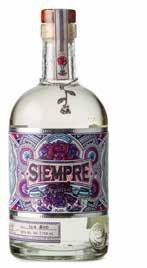
Cascahuin Reposado

Brilliant reposado with some creaminess and barrel flavours softening some of the stronger agave notes, but with a long, slightly fiery, and very peppery finish. The resposado from Cascahuin is the sort of workhorse, everyday tequila that is just as good in a drink as it is a sipper that exudes quality and a sense of place.
843706 $80-85
Siempre Plata Tequila
A consistent high performer at our Alberta Beverage Awards, the Plata from Siempre is expressive on the nose, but smooth and full with peppery, agave notes, a clean salinity, and a lengthy, but still mellow finish that goes on and on. A fine sipping example, but a treat in classic cocktails that don’t need too much tequila kick.
CSPC 785712 $65-70
Rey Campero Joven Mezcal Artesanal
An incredible, smoky, saline, and yes, perhaps a little bit of a sexy spirit too with so much going on from start to finish showboating rich agave characters,
BY TOM FIRTH AND LINDA GARSON

but also chipped stone and an almost coppery note. A mezcal that exudes that sense of place that most spirits only dream of showing. Not for the faint of heart, but a beautiful sipper regardless.
848466 $51-55
Cimarron Blanco
Refined might not quite be the word one wants when talking about tequila, but this blanco from the Jalisco foothills is quite a treat. Clean – exceptionally clean with smoothness from the start to the finish with lifted salinity, a mild roasted earthiness, and a long finish. A sipping tequila in every sense, it’s also going to make some smoooooth margaritas.
878823 $55-60
Tequila Tromba Blanco
Master Distiller Marco Cedano is a pioneer of premium tequila, and has worked with well-known luxury brands, but Tromba is his distillery and his brand. His Blanco starts with a clean, sweet nose leading to fresh and lively, tropical fruit flavours with detectable minty highlights. It would be perfect

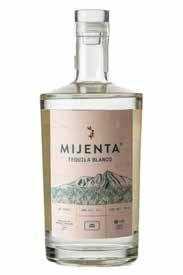
for a Ranch Water cocktail but very satisfying to sip neat.
797397 $51
Cascahuin Blanco Tahona
Another brilliant example of blanco tequila with a bright and brassy nose that is quite herbal, peppery, and saline too. Full flavoured, with all that earthiness tequila traditionally has, this is nice and chewy with a slightly tannic feel on the finish. A fine example to drink when the seaside is calling, but will mix well in drinks where you want to taste the tequila too.
843708 $135-145
Mijenta Tequila Blanco
‘Mijenta’ comes from Mi Gente, ‘my people’ – your family or community that share the same beliefs, but you might not want to share this blanco tequila. Awarded Best in Class at the 2023 Alberta Beverage Awards, this sipping tequila has an intense and seductive, sweet nose of vanilla and honeydew melon that follow on the palate right through to the lengthy finish.
859525 $90-95
Patron Reposado
Possibly Mexico’s biggest craft distillery, as instead of increasing production with technology, Patron add more tahonas and more small-batch copper pot stills. Having aged for around four months, the reposado has a light golden colour with aromas of fresh agave and vanilla from the wood, that combine with baking spices and a hint of honey on the palate. One for Margaritas!
814065 $70-80
Don Adriano Añejo Ultra-Premium
You’ll be surprised when you open the hand-painted ceramic bottle, at the intense amber colour of this añejo tequila, and on bringing it closer – the intense maple, marmalade, and vanilla aromas, but it all makes sense when you know that Don Adriano’s Ultra-Premium expression has aged for 18 months in French oak wine barrels. Enjoy after dinner like a good whisky.
886970 $245-252
Mitre Origen Joven Mezcal Artesanal
A stunner, and proof that mezcal can be just as good (if not better sometimes) that tequila with a clean, almost perfumed aroma offset by some clay amphora style mineral or earthy notes but still a little salty and a little smoky too. Deeply layered on the palate, it’s also quite soft too. Perhaps it’s the bottling strength of 37.5 percent, but this one is easy to sip and easier to mix too.
887782 $50-55
Atanasio Origenes Blanco Espíritu Fuerte
As it says on the label, ‘producto artesanal’, this tiny production tequila from ‘Maestro Tequilero” distiller Rene Carranza is really smooth - peppery and herbal, with grassy and minty notes, and just a hint of citrus, and even at 46 percent ABV, drinks far too easily without the need for any water. It will come as no surprise that it was a winner at our 2023 Alberta Beverage Awards!
884903 $115-125
Tres Generations Tequila Plata
Distilled three times, and made at the same distillery since 1873, this modern tequila keeps one foot in tradition and one in the modern era. Smokey, saline, and just a little earthy on the nose, this bottle is exceptionally smooth across the palate while still carrying robust flavours, easing
into a subtle white pepper finish. A sipping tequila that would also work nicely in a variety of cocktails.
727418 $85-90
El Tequileño Cristalino Reposado
Cristalino is blanco tequila aged in oak and then filtered, usually through charcoal, to strip away the colour from the wood and leave a clear spirit that looks like blanco but with the complex flavours from barrel aging. El Tequileño Cristalino has tropical fruit flavours possibly from the 150-yearold mango trees surrounding the distillery, and a hint of vanilla. Drink on the rocks with clear ice.
836470 $70
Nobleza 33 Tequila Reposado Legado Alberta’s newest ultra premium tequila has just arrived in our province. ‘Legado’ (the Legacy) is distllled by legendary tequila master, Felipe Camarena, at El Pandillo, from deep well water beneath the distillery, and with 5 percent agave fibre. Aged seven months in American oak sherry barrels, the flavour really comes through in every dark golden, complex, brown sugar, sweet, and luscious sip.
CSPC 104278 $150
Tequila Fortaleza Blanco, Still Strength
Possibly one of the most sought-after tequilas, due to legendary master distiller, Guillermo Sauza’s traditional, small batch production (exactly as his great-greatgrandfather made it). In hand-blown bottles with a hand-painted agave piña stopper, Still Strength is wonderfully rustic and vegetal, and as it sounds, bottled from the copper pot still with no dilution. Treat with respect and maybe add a drop of water to open it up a little.
844683 around $140-150
El Tequileño Sassenach Select
Well, here’s a thing – and a pretty darned amazing thing too if you like premium tequila and good Scotch. El Tequileño joined forces with actor and founder of Sassenach Spirits, Sam Heughan, to create this limited edition, double wood reposado - El Tequileño tequila aged two years in American oak barrels and finished in French oak for four months. Think sea salt caramel and toasty oak, you might swear this was whisky!
884903 $115-125









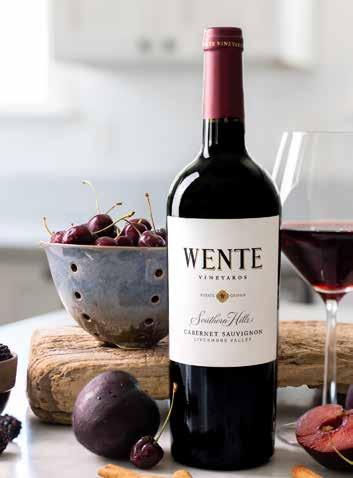

The first of it‘s kind in Calgary, exclusive to The Dorian.




When one thinks of alcohol from Mexico, inevitably it’s tequila. However, in recent years, Mexican beer has been making a name for itself. While there is no distinct category for “Mexican-Style Beer” in any major judging competitions (mainly because they brew more than one style of beer there), the most well known, the Mexican Lager, usually gets dumped into the gigantic sweeping category called International Lagers. This is the home of almost every heavily marketed, Big Brewery brand you can think of.
To that point, about 90% of Mexico’s beer is produced by two breweries, Grupo Modelo (brewers of Corona, Pacifico, Modelo) and Cervecería Cuauhtémoc Moctezuma (Sol, Dos Equis, Tecate), who fall under the corporate umbrellas of AB InBev and Heineken respectively. It wasn’t always this way, as Mexico used to be home to over three dozen small
regional breweries through most of the 20th century.
Mexico doesn’t have the long history of brewing that one finds in Europe. While the indigenous people of the country fermented all manner of plants including maize, pineapples, and agaves to produce tejuino, tesgüino, tepache, pozol, pulque, and more, these beverages bear no resemblance to what we now call beer. When the Spanish arrived in the early part of the 16th century, they introduced barley as the main ingredient and brewing began. Because of the expense and strict Spanish control, brewing beer didn’t really take off until the second half of the 19th century. Mexico had gained its independence from Spain, but fell into what is known as the Imperio Mexicano, a constitutional monarchy established by the French who took control of the country with the Austrian House of Habsburg-Lorraine in 1863.
What followed was a large influx of German and Austrian immigrants, who proceeded to build modern breweries over the next several decades. Their influence in Mexican brewing is still evident today.
Mexican beer was rarely exported until Prohibition arrived in the US in 1920. Beer production grew during this period, especially along the border, and continued as tourism, first by car and later by air, exploded after World War II. During the second half of the 20th century, bigger breweries consolidated or bought up smaller breweries until the two giants dominated. These breweries have continued to grow, to the point that Mexico is now the world’s largest beer exporter and Corona Extra is one of the world’s top selling brands, available in over 150 countries. Craft brewing arrived in Mexico in the last decade or so, but at nowhere near the pace seen in Canada or the US.
As mentioned above, it’s more of an interpretation than a true style. The most popular is the clara (clear) version; the light yellow, refreshing, easy drinking beer, commonly made with Pilsner malt, very little hops, and varying amounts of corn/maize, sometimes served with lime and/or salt. They usually range from about 4.5-5% ABV.
Listed below are brands brewed in Mexico, and are available in multiple formats. The following are 6 pack bottles, usually costing about $17-$20 each.
Dos Equis Special Lager, CSPC 156174
Pacifico Clara, CSPC 262626
Modelo Especial, CSPC 778777
Beginning a couple of years ago, Sol, CSPC 847530 and Corona Extra, CSPC 837641, have been brewed in Canada, at either Molson or Labatt breweries. If you want Corona Extra that was brewed in Mexico, it is only available in the smaller Coronita (207 mL bottle, CSPC 716402, $13 for a 6 pack) - the one you find served in buckets in Mexican restaurants.
These beers are now recreated by craft breweries all over North America, as brewers and the public continue to discover the wonders of lagers in general. Some are made with corn and/or rice adjuncts, others are 100 percent barley malt. This is not a style that screams for creativity, but brewers can manipulate ingredients to keep the same drinkability as those brewed in Mexico. These craft versions are usually more flavourful than their Mexican counterparts, often with more malt backbone and a greater hop presence, however they tend to look similar and are just as refreshing.
All listed are from Alberta except where noted. Prices are about $16-$19 for either 4 x 473 mL pack or 6 x 355 mL pack cans.
Zero Issue Fringe (formerly ROC), CSPC 876132
Origin Mexican Lager, CSPC 871325
Trolley 5 Hasta Mañana, CSPC 886897
Dog Island Dos Almas, CSPC 827393
Town Square Chiquita Mexican Cerveza, CSPC 852636
Leduc Brewing Snowbird Mexican
Cerveza, CSPC 882237
Hell's Basement Midday Mariachi, CSPC 866276
Brewsters Mexcellent Cerveza, CSPC 818787
Blindman Dream Machine, CSPC 888123, $29, 12 x 355 mL cans
Yellow Dog El Perro Cerveza Clara (BC), CSPC 896429
Alesmith Clásico (USA), CSPC 868507


A style brought over by the Austrians, this obscura (dark) variant uses Vienna malt, less or no corn, and has more noble hops. Ranging from light amber to dark brown in colour, it is more popular now in Mexico than in its native country and it provides a nice alternative to the lighter clara version.
Negra Modelo (Mexico), CSPC 741866, $19, 6 pk. bottles
Hell's Basement Midnight Mariachi, CSPC 862966
Citizen Brewing Señor Citizen, CSPC 859021
Because so many people drink Mexican lagers with lime and sometimes a salted rim, brewers can do the work and add them as ingredients.
Category 12 Salted Lime Lager (BC), CSPC 876005
Good Robot Diablo Mexican Lager (Nova Scotia), CSPC 860968 – with lime and jalapeños, but the heat is very subtle. $4-5, 473 mL can
There are also ales made in Mexico. The growing numbers of craft breweries are now making all styles of beer.
Fortuna Cantabeerto Agave Session
Ale, CSPC 863150 – flavoured with agave and citrus fruits. $6-7, 355 mL bottle
Because beer has a variety of influences and can now be any flavour, Mexican drinks are being copied in a beer format by both craft and macro brewers, with some brands being seasonal or only kept in their taprooms.
Horchata
Horchata is a plant-based drink (in Mexico, it is commonly made from rice) flavoured with vanilla, cinnamon, and other spices.
Twin Sails Con Leche (BC), CSPC 801350 – a milk stout version with added coffee, cinnamon, and vanilla. $27, 4 pk. cans
New Level Heavy Metal Horchata, CSPC 833900 – a blonde ale with lactose, cinnamon, almonds, and vanilla beans. $18, 4 pk. cans
Margarita
A drink that needs no introduction, its salty lime flavour interacts well with sour beers, especially gose, a German style that employs salted water as a main ingredient. Often a hazy beer, it can come in many flavours, as does the cocktail.
Russell No Way Margarita Gose (BC), CSPC 892759, $12, 4 pk. cans
Wildeye Strawberry Margarita Gose (BC), CSPC 892174, $16, 4 pk. cans
Michelada/Chelada
These beer cocktails have a salt and lime base, with the Michelada having added clamato or tomato juice and seasonings, making it red in colour.
Bud Light Chelada (US), CSPC 757714 more of a Michelada, made with clamato. $18, 6 x 355 mL cans.
Moosehead Chelada (New Brunswick), CSPC 882354 – light lager base with added salt and lime. $32, 12 x 355 mL cans.
Many of these beers might only be available seasonally in the warmer months. There are many other versions available in Alberta; look for any craft beer with “cerveza” in its name, and chances are you’ve found a Mexican lager. ¡Salud!
David has worked in liquor since the late 1980s. He is a freelance writer, beer judge, speaker, and since 2014, has run Brew Ed monthly beer education classes in Calgary. Follow @abfbrewed.


Over the years, I’ve gotten so used to writing things, or making recommendations months (sometimes even more than a year) in advance. For Making the Case, much to our team’s delight, I like to make these suggestions for print as late as possible. In some ways, it’s to ensure things are the correct or most current vintage, but also – I want to see what the weather will bring.
This month, all these recommendations are from countries where Spanish is the most common language. Chile, Argentina, and Spain – classic wine producing countries that understand balancing value and quality well, and if we are fortunate enough to have an early spring, these are all wines that work so very well when dinner is coming from the smoker or the grill. Mostly reds this month, but these two whites are pretty damn good too - or as one might say in Spanish, “Bastante maldito bueno!”
Find these wines by searching the CSPC code at Liquorconnect.com; your local liquor store can also use this code to order it for you. Prices are approximate.
Luigi Bosca De Sangre 2020 Cabernet Sauvignon, Mendoza, Argentina
The well-known Bosca brand has been hitting it out of the park for years and years, and the De Sangre line is some of their best offerings. Their cab is sourced from both Lujan de Coyo and Uco Valley, and is rather sleek and supple. Cassis and cherry fruits, and mild capsicum tones hold the nose together, but on the palate…. all big tannin and cherry cola with a firm, bitter back end from some serious tannins. Very well made and a pleasure to drink – especially when that earthy liquorice note kicks in. Delicious. CSPC 871580 $30-33
Tom has been waxing on (and on) about wine, beer, and spirits for more than 25 years and freelances, consults, and judges on beverages all year long. He is the Managing Editor for Culinaire Magazine, and the Competition Director for the Alberta Beverage Awards.
For those a little tired of the “in your face” grassy New Zealand examples, Chile is a stunning place for a slightly different expression. A little grassy of course, but more focused around melon and lime fruits, it’s on the palate that this really shines with balanced acids, a slightly juicer mid-palate, and a more perfumed finish. Delicious.
CSPC 542472 $20-22

Chenin blanc from Chile? Yes please! Top shelf in every regard, this chenin was fermented in amphora in smaller batches resulting in a softer expression of chenin blanc with honey and red berries on the nose, and a mild perfume character. Wow, this is great on the palate too with pure varietal expression but a richness (not sweetness) from the amphora. Interesting, complex, and exciting to drink.
CSPC 878909 $26-30

Beau Bonhomme 2020 Organic Red Jumilla, Spain
Winemaker Nathalie Bonhomme has been making some incredible deals on exceptionally well made wines for some time and the organic Beau Bonhomme is no exception. Made with monastrell, fruits are a little dark and deep with a bit of plum and cherry leading the way on the nose and palate. Full flavoured with good weight and smooth tannins and a slightly chocolatey finish, this is a solid pairing with beef, stews, and even burgers.
CSPC 612812 $20-22

The Finca Los Primos is one of the rock solid, damn good deals of Argentine malbec. Always a stellar price with dark plum fruits on the palate, dried herb on the nose, and that opulence, almost generous depth that malbec does so well. Tastes like a much more expensive bottle, but a fine treat for those wonderful homemade burgers!
CSPC 632919 $17-19


Polished and refined, this is darn good grenache that is organic too. The nose evokes a little cocoa with raspberries and a mild herbaceousness, and in the mouth, lighter bodied with great acids and tannins in balance. But it’s those fresh fruits that sing right through to the graceful finish. A stunning bottle that would match nicely with charcuterie, pork, or hard cheese.
CSPC 784387 $30-35

Spain
A bit of a weeknight wine that just happens to be organic, but also wellpriced and a rather friendly expression too that would also work for a nice, casual barbecue. Fruit aromas evoke blackberry juice and plum with a pretty open approach that isn’t too complex. On the palate, juicy, fresh, and easy too. Although it will be pretty flexible on the table with meats or tomato sauces, it’s darn good on its own too.
CSPC 762587 About $15-17

A delightfully earthy but still fruit driven red from Argentina without a drop of malbec in it. Cherry style fruits with milder coffee and spice, and a vibrant floral character lead off in the aroma, but it’s in the palate that really shows why the De Sangre is so popular. Big fruits with protein-friendly tannins and some excellent acids, all expertly balanced with each other. Best enjoyed with beef, or rich, mushroom based dishes, but if you can hang on to this for a year or two – do it!
CSPC 745106 $30-34
Nothing quite says Spanish wine like tempranillo. The flagship grape of Spain is in good hands here with wet cherries on the nose, but also mild smokiness and earthy spices and a pinch of anise. Silky on the palate, with weighty tannins supported by wonderful acids begging for protein rich dishes with a little fat. Grilled pork, beef of any kind, or charcuterie will be a friend here. A beautiful bottle to have on hand.
CSPC 781021 $19-23

While cabernet sauvignon has made its home in almost every wine country in the world, it’s capable of reaching some pretty incredible highs in Chile, where it also represents some incredible value too for us. From Arboleda, this cab shows off a wonderful perfume, deep cherry fruit, and a complex spice, evoking cigar box and olive. Big and chewy on the palate but well suited to juicy, ripe fruits. A great sort of weeknight cabernet, well suited to burgers or even a nice brisket.
CSPC707383 $22-25

Chile
Two things Chile has always done well with its wine – cabernet sauvignon, and value, and this is no exception. A rather approachable cabernet with good, brooding black fruits, expressive spice, a deep, earthy tannin and chewy midpalate. What’s great about those things? This is a fine bottle to have for any red meat-centric meal like homemade steak sandwiches, or a pan-seared steak.
CSPC 275925 $17-19

Errazuriz “Max” 2020 Cabernet Sauvignon, Aconcagua, Chile
A pretty amazing bottle of south American cabernet. Errazuriz is one of the icons of Chilean wine – for good reason. A deep, smoky cabernet on the nose with a bit of salinity, plum and cherry fruits, olive, and bell pepper, in a complex and evolving experience. In the mouth remarkably well balanced bringing great fruits, serious (and suitable) tannin, and a long, spice laden finish. Serve with ribeyes if you can, but even hanger steaks!
CSPC 287505 $23-26

Weinert 2019 Cabernet Franc Mendoza, Argentina
When I judged for Argentina’s national wine competition back in 2013, some of the most incredible bottles we tried were made with cabernet franc, and I’m always stoked to try them again. Simply beautiful on the nose with subtle floral characters, spices, and strawberry and raspberry fruits, but it’s on the palate that this wine becomes amazing with an almost plush mouthfeel, and expertly balanced fruit and spice. A tad young at this point, but it is a fine bottle any day of the week.
CSPC885082 $36-40

José Feeds the World
Cali-Baja Cuisine
This book is a keeper – not only because it contains so many recipes that many of us in Alberta are familiar with, but didn’t know how to make authentically, but because it explains why these recipes come from this region of Mexico, and the impact of the people on the cuisine, along with a fascinating and apolitical history of the area. Author Michael A. Gardiner takes us from breakfast to desserts, and home cooks will look forward to making these dishes with a new appreciation. $54 Rizzoli.
‘How a famous chef feeds millions of people in need around the world’. The true story of awardwinning, Michelin-starred chef, José Andres who, after cooking for hungry survivors of the 2010 Haiti earthquake, founded World Central Kitchen, a relief organization that has fed more than 200 million people affected by disaster and war. An inspirational book by David Unger, and beautifully illustrated by Marta Alvarez Miguens, for readers aged 4-8 years (and their parents). $29 Sourcebooks.



Still interested in alternative beverages? Coming in a choice of five cocktail styles and widely available, the line is a little more flavour-centric than the “nude” or flavoured waters but does a good job of keeping the sugar and calories down too. The “Spritz” is a favourite, but so is the creamier “Amaretto Sour”, and the refreshing “Mojito”. Perhaps best of all is that there is a wide range of flavours for most palates. About $9-10 at most locations.
We have a new favourite all-purpose spice!
The Pelletier family, of Edmonton’s Copper Spice Company, have created Slava Ukraini – a small-batch blend of freshly ground, high-quality bell peppers, garlic, onion, herbs, salt, and pepper, inspired by the flavours of Ukrainian cuisine. It elevated our chicken, salmon, and roasted veggies, and even better - the full retail value goes to support the Canada-Ukraine Foundation's humanitarian appeal! 114 g (¾ cup) $11 at copperspiceco.com.




Riedel Nick & Nora Large Glass
Named for the martini-drinking, wisecracking, homicide-solving, Nick and Nora Charles in Dashiell Hammett’s novel, ‘The Thin Man’, these glasses are a new addition to Riedel’s Drink Specific Glassware range, and an evolution from their original glasses to be a little larger and more durable for home cocktail enthusiasts as well as restaurants and bars. Machine-made in crystal glass and dishwasher safe, a set of two glasses are $50-65 at good wine stores, houseware stores, and online at riedel.com/en-ca/
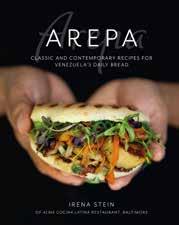
Arepa
The indigenous people of Venezuela have been grinding white corn and adding water to make dough since 1,000 BC, and as the population disperses, their national dish, ‘arepa’, has become known all over the world. Irena Stein’s comprehensive book includes all the classic and contemporary recipes for fillings that you could ever need for these glutenand dairy-free, crispy corn patties, as well as desserts and cocktails to drink with them, all with bright and colourful photographs. $41 Ryland Peters & Small.


Registration for the 1 2TH ALBERTA BEVERAGE AWARDS is opening Bigger, better, and reaching more Albertan consumers than ever before!
Judging mid-July, 2024 Res ults to entrants in August, 2024
Complete Results publish ed in Culinaire Magazine and online October 1, 2024







As a child growing up near Manchester, England, Wendy Irvine wanted to be a flight attendant, and while she never worked for airlines, she’s worked in cafes and then pubs from the age of eleven, when her parents bought a run-down B&B and moved to Blackpool.
“They didn't have a lot, my mum worked as a seamstress at the knicker factory, my dad was a painter and decorator,” she says. “Blackpool used to be packed; the first Easter they opened I had to sleep between the dining room tables because my mum let my room, and my dad went and got extra jobs as they needed the money.”
At 16, Irvine studied hotel hospitality management, and worked for eight years before coming to Canada on holiday – exactly 34 years ago. Shortly after returning, an opportunity for an open return air ticket arose and she quit her job, sold her car, and moved to Mississauga, where she met Lance, her husband-to-be. “We were there seven years, and Alicia, my daughter, was born there, but it was a
struggle. Lance's family was in Calgary, so we came here. As a chef he worked nights, and I worked days. I was probably making $7 an hour, but I was great at what I did,” she laughs.
They worked for Brewster's, and then at the Elephant & Castle, where she worked lunchtimes to be home for her daughter, until it closed down, and she landed a job at The Unicorn as a part-time server. The job grew, and she became more involved in bartending, until they needed someone in the office. “I didn't know my way around anything - a laptop computer, payroll, you name it, so I taught myself!”
They took over the Libertine and Below Deck, and when the Unicorn closed in 2015, they rebranded to Unicorn Super Pub. “At the time, the original owners were parting ways,” explains Irvine. “I lost my husband the weekend of the floods in 2013, and I'd lost my dad nine months before that. I was beside myself as I thought I'm going to lose my job. Who's going to hire me?”
“I went to the bank, begged and pleaded and borrowed a lot of money, and I was able to buy 25 percent shares along with Mark Jennings, my business partner.” They worked until Covid hit, and everything shut down, and the original partners wanted to walk away again. “We didn't, so somehow, some way, we bought them out and I became 50 percent of not a lot because we were dragging our backsides out of Covid. It was survival mode. I had to work to keep a roof over our heads, but I survived.”
“Last summer, Paul, my GM, was getting a bit bored and decided we need another bar,” she laughs. “And the old College Bar on 4th popped up. I said, ‘absolutely not, it sounds dodgy.’ But it wasn't, it was the best thing that could have happened to us. It's so busy and it's getting busier. I've been so blessed my whole life; I was always loved, had great friends, great staff, and thousands of people over the years have supported me. I wouldn't change any of it.”
What bottle does Irvine have stashed away?
“Kathy was a big staple in my life for 25 years. I met her at the Unicorn, and she'd pop in now and again, and we’d go out. She'd always remember my birthday and Alicia's, and she bought me this bottle (Beringer Private Reserve Cabernet Sauvignon 2018) last year because she knew I like red wine.” Irvine smiles. “She said, ‘I don't know what it is, I just asked the guy in the wine store.’”
“She passed away suddenly in November and didn't tell any of us that she’d got cancer. I was upset because we were supposed to get together in October. She wasn't feeling good, and then we got busy. She was a beautiful soul, and she always used to say that ‘she only knew good people.’ I’m saving the bottle for a random day when the right people are around. It's sometimes off the cuff, and just getting together with people that appreciate wine.”
“I don’t get up early nothingfor " “I don’t get up early nothingfor "

Wake your taste buds up to this year’s Taste of Bragg Creek on Friday, April 26th from 5:00pm to 9:00pm. Participating Bragg Creek restaurateurs and liquor merchants will feature their culinary skills and products for visitors from near and far. Come to Bragg Creek and quench your thirst or satisfy your post-hibernation hunger. You’ll go door to door to sample delectable fare, plus our participating retail merchants will stay open late to showcase their wares. Tasting tickets will be sold at convenient locations in the hamlet during the festivities. New this year we’re adding online tasting ticket pre-sales so be sure to follow us on social media for more info to come. Make it a Bragg Creek date for the whole family and feel great knowing this event raises funds for Easter Seals Camp Horizon.
For complete details visit tasteofbraggcreek.ca facebook.com/tasteofbragg @ tasteofbraggcreek








